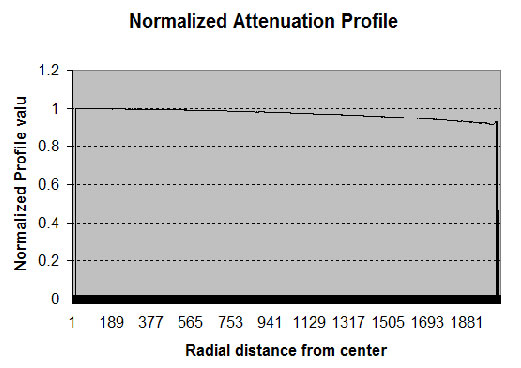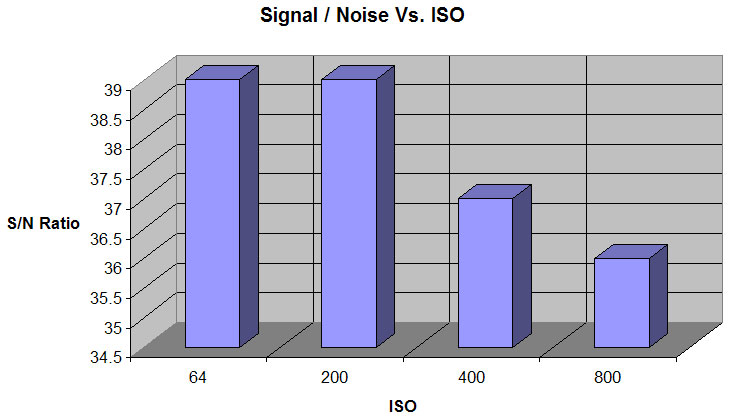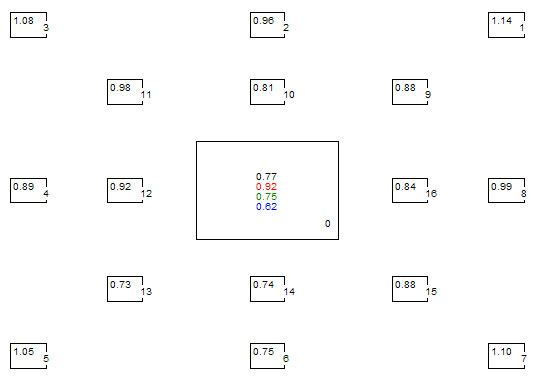This test of theKonica Minolta Dimage A2camera and lens was conducted usingDxO Analyzer. If you are not familiar with this optical testing system please readthis tutorial. Without being familiar with how the tests are conducted, and how to read them, there’s not much point in proceeding.
The purpose of this test report is to support the empirical findings of my field test of this system. Though the tests on this page are interesting and informative (as well as accurate and repeatable), they really only tell us about selected aspects of a camera or lens’ capabilities.
About The Tests
As you can see from theDxO Tutorialthere are a large number of charts and text graphs produced for each of the four tests —Distortion & Chromatic Aberration,Vignetting,NoiseandBlur. A more comprehensive test would have to be done at all available apertures, all available ISO speeds, and at a large cross-section of focal lengths (in the case of zoom lenses). This would not only take an inordinately large amount of time to conduct, but would take up far to much space here and likely not be of much interest.
Consequently in this and other tests usingDxO AnalyzerI am publishing just one complete set of charts — those done at f/5.6, which is typically an optimum aperture for most lenses. In the case of zoom lenses this test is also done at a mid-position in the lens’ focal length range. I also post data for other F stops, ISO ratings and in the case of zooms a selection of focal length, including the widest and longest. In my comments to each section I also draw attention to extremes of performance, such as maximum vignetting, greatest and least noise, etc.
To jump directly to the definition and tutorial for a specific test click on theDC,V,NorBlogos.
By Way of Comparison
At the time of preparation of this analysis (mid- March, 2004) the only other 8 Megapixel digicam to have been tested and reviewed withDxO Analyzerhas been theSony F828. It therefore will serve as a reference point. You may wish to open itsanalysis pagein a separate window so that these can be compared. If you are reading this at a point when other 8 MP cameras have also been reviewed, you can find links to themhere.
Distortion and Chromatic Aberration
Minolta A2 @ ISO 64.
Focal Length = 20.51mm (80mm equivalent)

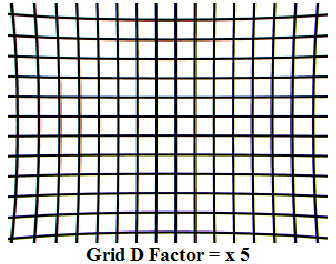


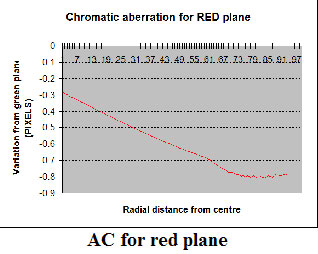
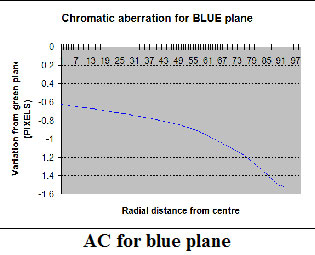
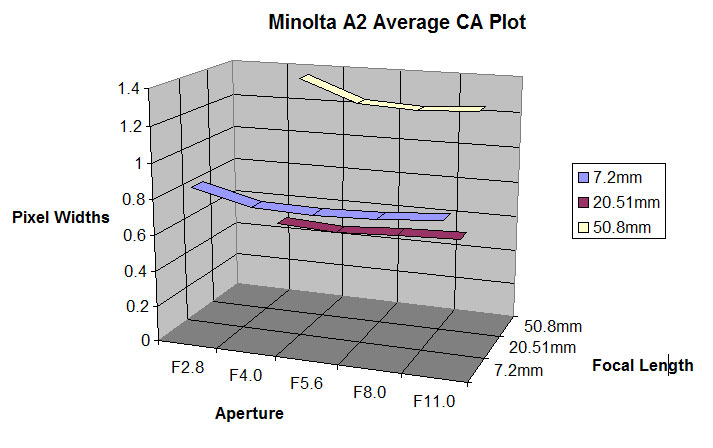
Observation
Distortion (pincushion) at a mid-range focal length of 20mm (80mm equiv) is quite high, with an average value of 0.17%. This compares to the Sony at 0.01%.
At the lens’ widest angle setting distortion is even higher at 0.77% barrel.
In terms of lateral chromatic aberration the Minolta measures similarly to the Sony at the long and wide ends of its focal range, but whereas CA drops to negligible values in the mid-range with the Sony it remains fairly constant at all focal lengths on the A2.
Maximum Chromatic Aberration in pixels 7.2mm (28mm) 20.5mm (85mm) 51mm (200mm) f/2.8-f/3.5 2.40 1.57 2.97 f/4 2.09 na na f/5.6 1.91 1.37 2.72 f/8 1.99 1.29 2.57 f/11 2.06 1.33 2.57 At the wide end CA is better on the Minolta, but the Sony really is clean at mid-focal lengths. At the long end the Sony is still ahead, but not by much.
Please note that CA and so-calledpurple fringing(PF) are not necessarily the same thing. The issue of PF is covered in more detail in the A2’sfield report.
Vignetting
Observation
Again the A2 does not fair as well as the F828, this time in terms of vignetting, but the difference is very slight. Not a significant issue. Maximum attenuation is 1.47 at 7.2mm and negligible at .12 with the lens at 50.8mm.
Noise
Observation
The Signal to noise ratio at ISO 64 of 39 dB places the Minolta just slightly behind the Sony F828 in this measurement. It appears that the blue channel is the culprit.
As seen in the above chart ISO 200 measures very well — slightly better than the Sony, and at ISO 400 the Minolta does better than the Sony. The Sony can’t go to ISO 800, but the Minolta measures about the same at this speed as the Sony does at ISO 400.
Blur
Observation
The Minolta scores substantially better than the Sony on the Blur measurement,. At the mid-range 20.5mm focal length center reading is more than 1 BxU better than the Sony.
The Minolta appears to offer it’s best resolution performance at the wide end of it’s focal length range with blur increasing at the lens gets longer. But even worst case, with the lens at 50.8mm (200mm equivalent) the Minolta remains 1-2 BxU better than the Sony. Excellent performance.
The Bottom Line
Compared to the only other test measurements of an 8MP camera performed so far, the Sony F828, the Minolta A2 performs very well indeed. It is behind the Sony when it comes to measured distortion and CA (not purple fringing, which we don’t measure, and which is another story).
Vignetting is a bit lower on the Minolta, though not by much.
Signal to noise ratio is just 1dB lower at ISO 64, but the Minolta pulls ahead at higher ISOs.
It’s when it comes to the Blur measurement — how sharp the overall system is, combining the lens and the sensor, that the Minolta really pulls ahead.
This camera offers very fine optical performance and should be able to produce high quality images, especially at low ISOs.
Caution
Before drawing any conclusions based on this report, please be sure to read theDxO Analyzer Tutorial. Also, kindly read theCaveatssection of that tutorial as well as theFinal Word.





